9 Incredible Things You Must Try Eating the Next Time You Travel

As frequent holidaymakers, we know that travelling is all about new experiences and getting out of your comfort zone. This statement runs true not only in accepting brand new culture and understanding local social cues, but also in the delicacies a country has to offer. In fact, there are so many things you must try eating while exploring the world that would help broaden your flavour profiles.
After all, there must be a reason why there’s a huge influx of social media creators who make eating while travelling their content niche! Barring language barriers, trying new foods is a great way for you to live just like the locals do. And that’s why in this article, we’re letting your eyes feast before your tummy with a list of things you should be eating while travelling.
From hearty dishes to street eats and more, we hope you’ve brought your appetite because here are the 9 things you must try eating the next time you travel. Wild Garlic Soup from Austria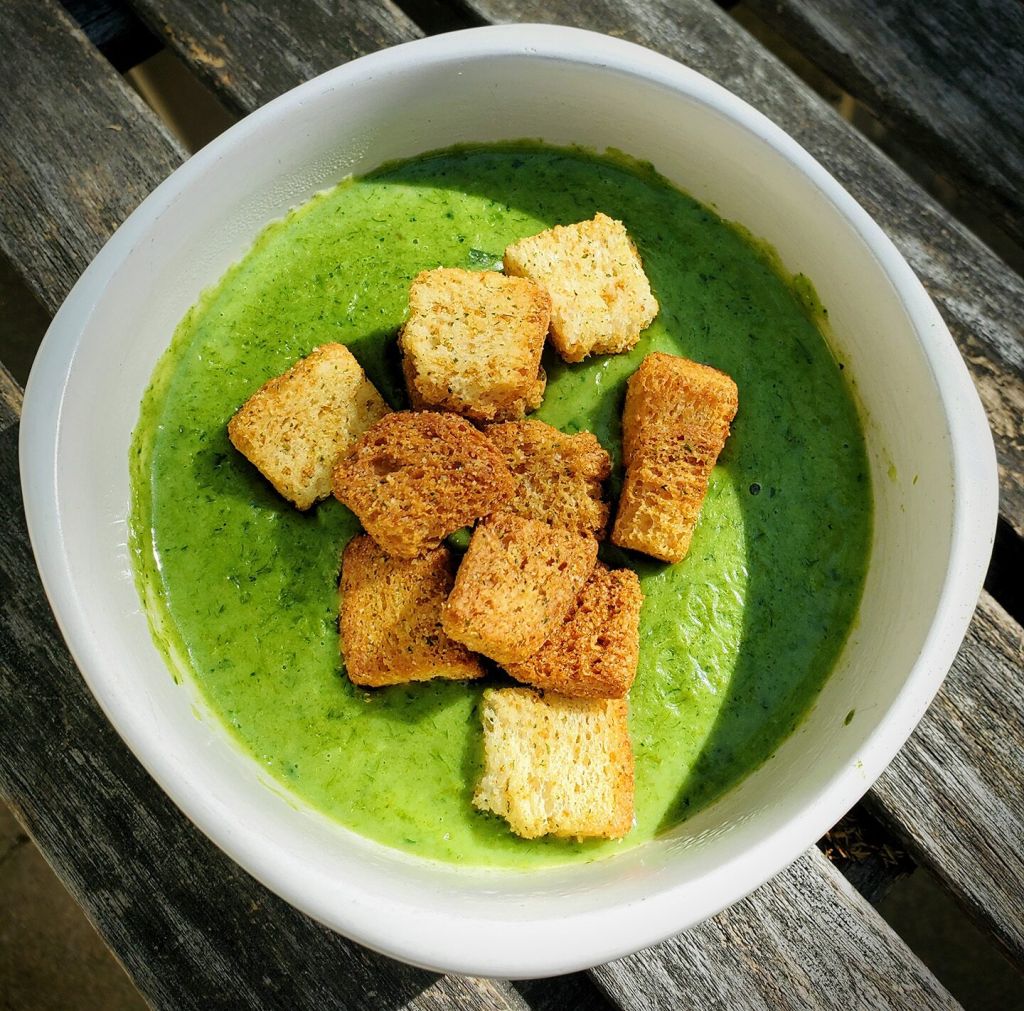 Photo by The Foraged Foodie
Photo by The Foraged Foodie
Frequent travellers may not always associate Austria with great food, but the country actually offers some great things you must try eating. Besides the ever-popular Wiener Schnitzel or veal cutlet, hungry holidaymakers will never go wrong while exploring Austria with an appetite.
However, what has surprisingly made it on our list of things you must try eating while travelling from Austria is their Wild Garlic Soup. Known to the locals as Bärlauchsuppe, it’s most commonly found on restaurant menus in spring when the wild garlic of Austrian forests begins sprouting.
Other ingredients may include broccoli or asparagus, though different chefs often have their personal renditions of this delicious entrée. A great way to lap up the green and creamy Wild Garlic Soup is with a side of freshly baked buns known as semmels. Occasionally, you’ll find croutons added to give the soup a textural crunch, although we think it’s just as delicious on its own, especially on a cold spring day.
Käsespätzle from Germany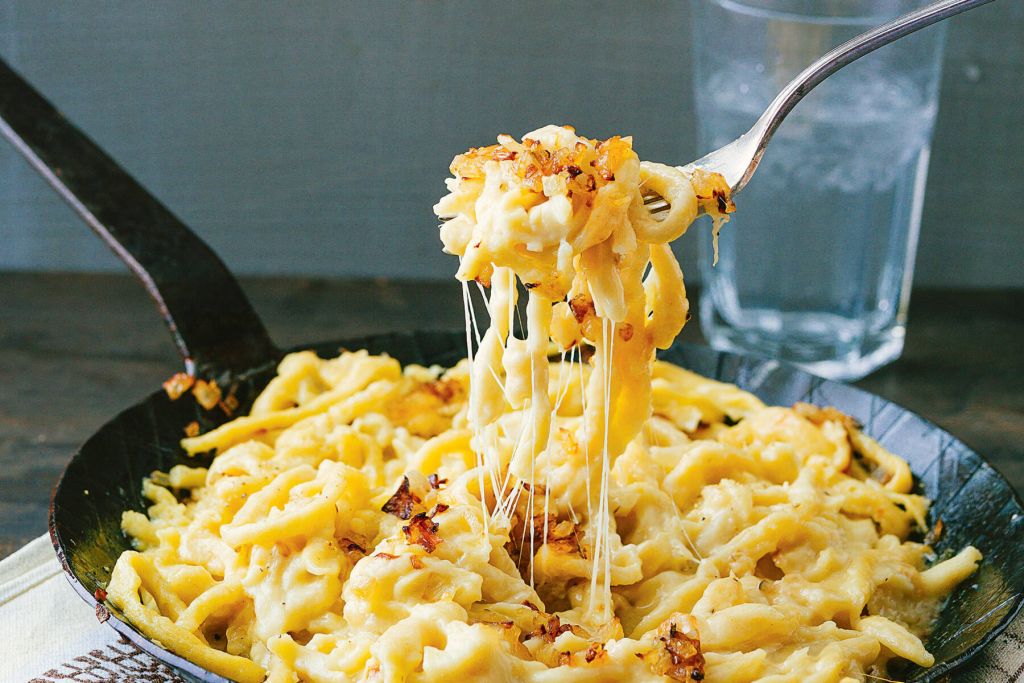 Photo by Kuchen Gotter
Photo by Kuchen Gotter
A pasta dish from Germany may not be something you would expect on a list of foods you should be eating while travelling, though many would argue that a serving of Käsespätzle will change that.
Served hot and hearty, the Käsespätzle or “spätzle with cheese” is exactly as its name suggests. It’s made with an irregularly round-shaped pasta called the spätzle, and preparation includes layering hot spätzle with grated cheese. Emmentaler or granular cheese is the usual cheese used to make käsespätzle, as these cheeses have excellent melting properties that result in a creamy and rich pasta dish with a satisfying cheese pull.
These layers will alternate a few times to fill up the dish plate before it is finally topped with fried onions and sent into the oven to bake. This is why orders of Käsespätzle are often followed by a warning from your server that the plate is scorching hot, so it’s best to be careful should you accidentally touch the tableware with your bare hands.
Pastel de Nata from Portugal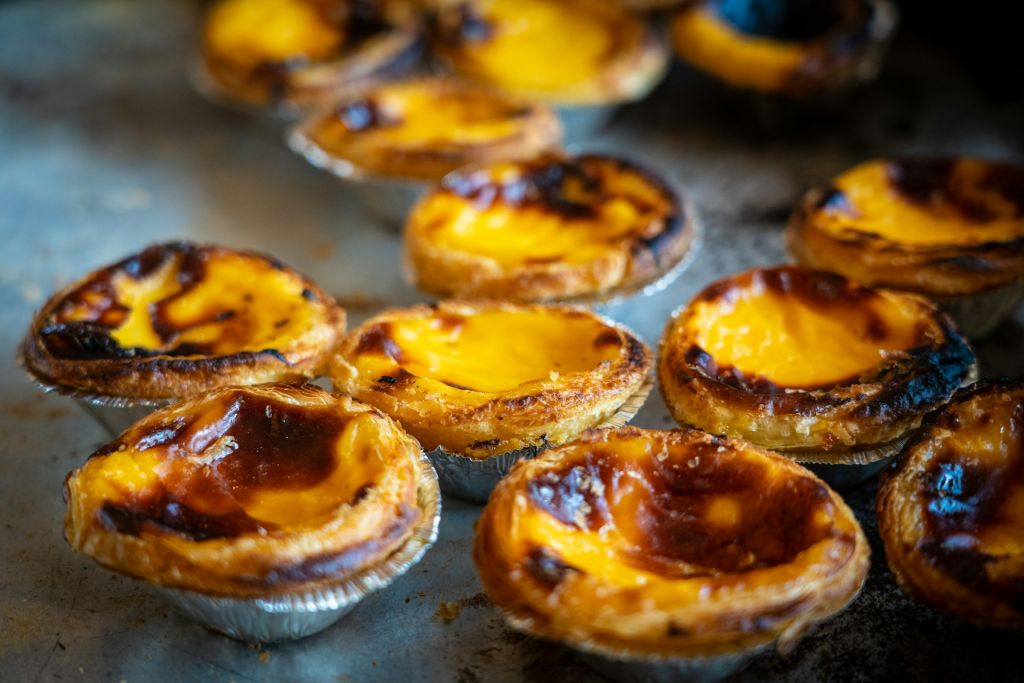 Photo by Nick Fewings on Unsplash
Photo by Nick Fewings on Unsplash
If you’ve visited any popular bakery recently, you wouldn’t be a stranger to the pastel de nata. Boasting an almost-burnt surface, this Portuguese egg custard tart pastry is a delicious snack, whether for teatime or when you feel like treating yourself. However, we believe that there’s no better way to enjoy a pastel de nata than in Portugal itself.
Known to the locals as pastéis de nata, these freshly baked treats can be found in almost all corners of Portugal. Over in Lisbon is where you’ll find the most original pastéis de nata ever made – although, like many popular dishes around the world, there have been disagreements about whether the pastéis de nata originated from the district of Belem.
According to history, the pastéis de nata take their roots from the Jerónimos Monastery. They were created by monks who often used egg whites to starch their clothes, leaving a surplus of egg yolks that they later repurposed to create this sweet dessert. The pastéis de nata were later sold to the public to help support the monastery in the 18th century.
Much of the original recipe is still being used by bakeries all over Portugal, and we can’t think of a better way to commemorate your visit here. Some shops have even adopted the tradition of ringing the bell whenever a batch of pastries is ready, so you know you’re in for a piece from the freshest bakes straight from the oven.
To best enjoy it as a local would, we recommend sprinkling a little cinnamon powder on top of your pastéis de nata before sinking your teeth into the sweet egg custard tart pastry. Although the pastel de nata doesn’t make for a good on-the-go treat due to its flaky nature, we still think it’s something you’ll definitely have to try eating while travelling.
Bitterballen from the Netherlands Photo by Haberdoedas on Unsplash
Photo by Haberdoedas on Unsplash
You’ve heard of vending machines that dispense drinks and collectables, but have you ever imagined grabbing a hot snack from a wall of vending machines? Well, over in the Netherlands, you can! And if there’s one snack you must try eating while travelling in the Netherlands, then it’s the piping hot bitterballen.
Deep-fried to golden brown perfection, a bitterballen is what locals call the typical bar snack. Traditionally made with a meat ragout – often made with either beef or veal – bitterballens are best enjoyed just as they’re out of the fryer. Mustard is served on the side as a dip, giving it that satisfying sharp and spicy tang to accompany savoury bitterballen. It’s best to be careful though, because each of these unassuming round snacks can harbour plenty of heat on the inside.
In recent days, however, plenty of plant-based bitterballen can also be found to cater to changing dietary needs. Mushrooms are the common substitute when making vegetarian bitterballen, although the roux texture remains the same for the most part. This inclusivity is a change that has been welcomed in open arms as it means travellers with such dietary needs can add the snack onto their list of things you must try eating on your next holiday.
While bitterballens can be found in many Dutch bars and restaurants, the most interesting way to try them is to head to the chain snack bar called FEBO. Serving hot and fresh bites, the snack bar is home to walls of vending machines where you can pay, grab, and eat all without interacting with any staff members. This experience of picking up your food from a wall alone is a must-try and is why we have the bitterballen on our list of things you must try eating while on a holiday.
Moussaka from Greece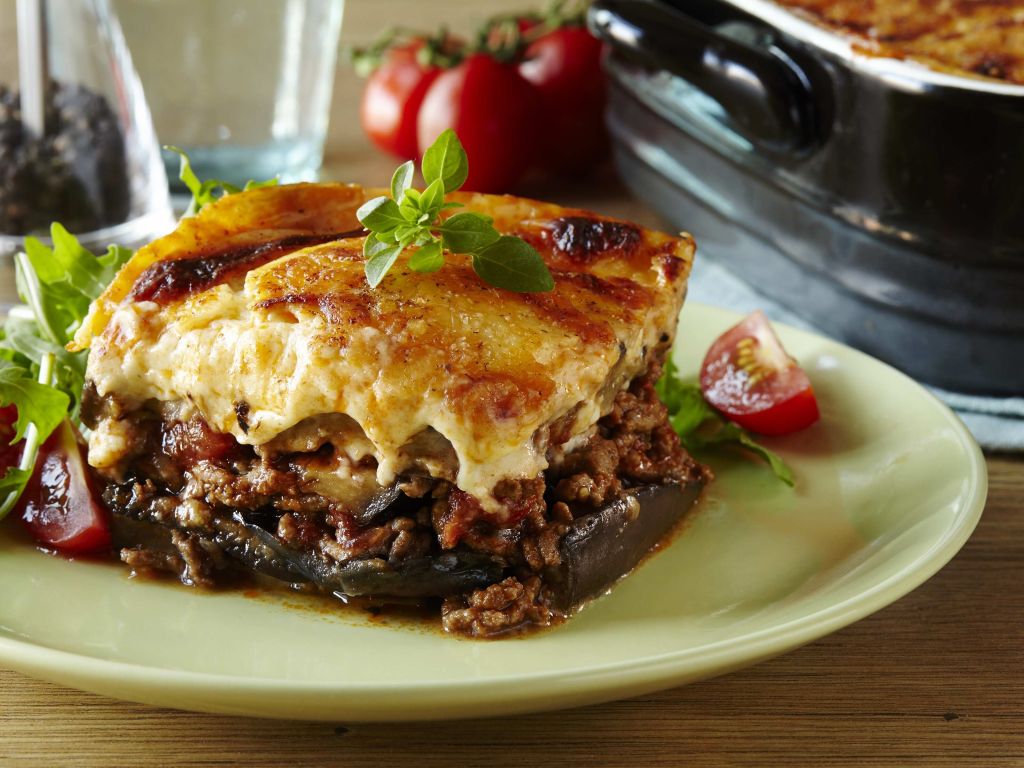 Photo by My Greek Odyssey
Photo by My Greek Odyssey
When asked to describe this traditional Greek dish, you may hear the locals mention that it feels like a grandma’s hug. Served piping hot but also extremely hearty, we can see how the moussaka has earned its reputation for being one of the best foods to be eating while travelling in Greece.
To help set a vision of moussaka, you’ll want to imagine a lasagna but with the pasta removed. In fact, this eggplant casserole is often served with ground meat (beef or lamb preferred) and cooked with a layer of milk-based sauce such as custard or béchamel. The combination is then broiled to create a beautiful golden-brown top.
A moussaka is typically served in individual portions, but its comfort food status has put the dish on almost every tavern menu in the country. This is why, as far as things you must try eating while travelling goes, a portion of moussaka is something you cannot miss while you’re in Greece.
Gyutan from Japan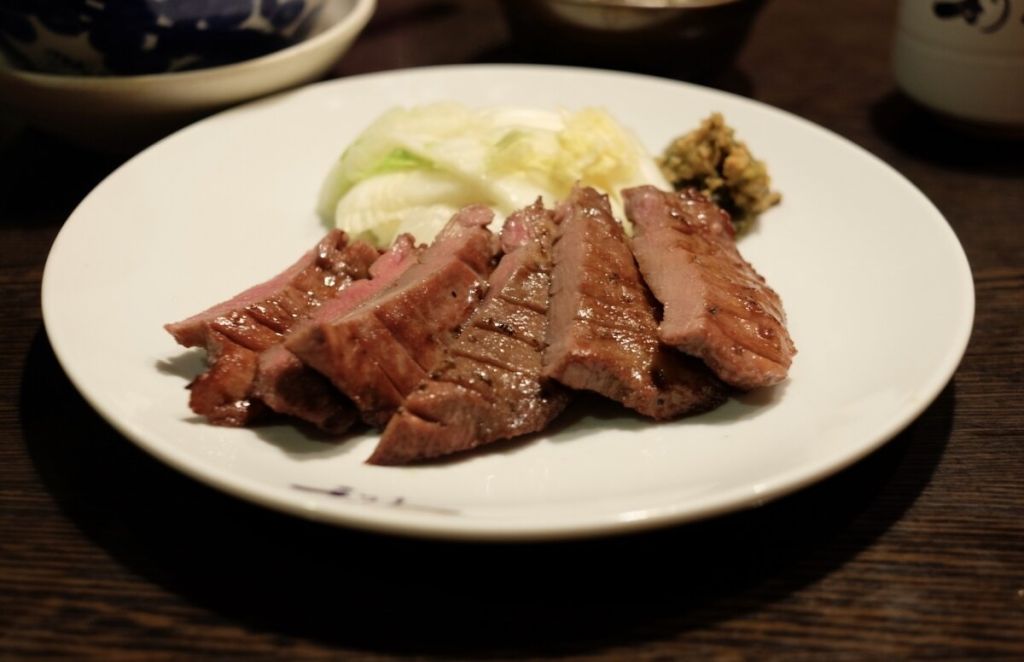 Photo by Japan Food Guide
Photo by Japan Food Guide
Located an hour and a half away from the city of Tokyo is where you’ll find Sendai, the capital city of the Miyagi Prefecture. Offering a calmer lifestyle than that of bustling Tokyo, Sendai is often touted as the perfect escape when you want a change of scenery in Japan without having to travel too far. As your Shinkansen rolls into the Sendai station, however, our recommendation is to first try the gyutan.
Gyutan, or cow’s tongue, is a local delicacy that was made popular in 1948. The shop that allegedly made this dish popular throughout the nation is called Tasuke and is still in business as one of the best places to enjoy gyutan today. It was founded by Keishirō Sano, who discovered the art of grilling the cow’s tongue to perfection; an art that many have tried to replicate but not many have succeeded.
Available as a side dish on its own or served on a bed of rice – the latter of which is tell known as a gyutan don – the cow’s tongue carries a distinctive smoky aroma with every bite. This is thanks to its preparation process, which sees the gyutan being grilled over a charcoal fire. Tender to bite when cooked well, it’s a crowd favourite that we couldn’t resist putting on our list of things you must try eating while travelling.
And if you’re feeling particularly adventurous for the day, why not enjoy the dish just as the locals will and pair the gyutan with a pint of beer? For many, it’s a great way to treat themselves, especially as they get out of work or perhaps serves as a pilgrimage to those who come back time and time again to Sendai on a holiday.
Bun Rieu Cua from Vietnam Photo by SeonKyoung Longest
Photo by SeonKyoung Longest
Translated to the Hanoi Crab Noodle Soup, the Bun Rieu Cua is a deliciously rich and tangy broth served with rice vermicelli noodles. More commonly enjoyed in northern Vietnam, it’s an appetising welcome for tourists visiting the country and is a daily staple for many who live or work in Hanoi.
Served in an iconic bright orange broth, the Bun Rieu Cua is traditionally prepared with small river crabs for the soup base. Crab cakes made of ground crab meat are the most common toppings for this dish, although extra condiments such as fried tofu, stir-fried beef, or pork cartilage may be added to suit the different tastes of the public.
What may surprise you most, however, is that a Bun Rieu Cua often pairs well with kimchi. This interesting combination showcases how food transverses countries, borders, and cultures, earning itself a spot in our recommendations of what you should be eating while travelling.
Thankfully, you wouldn’t have to go far to enjoy the Bun Rieu Cua. Found in most places around the city centre as a common street snack, it’s almost a no-brainer to pair a 4-day, 3-night escapade to Hanoi and Halong Bay with your search for the best Hanoi crab noodle soup.
Bol Renversé from Mauritius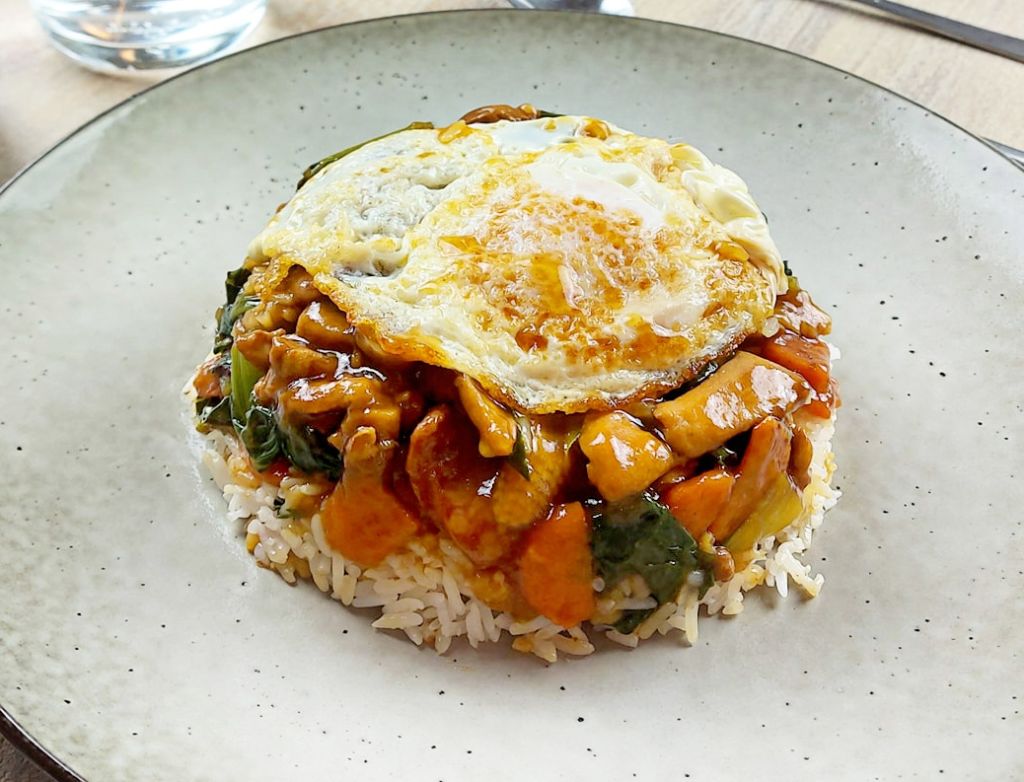 Photo by The Foodie’s Avenue
Photo by The Foodie’s Avenue
If the gorgeous sandy beaches and laid-back lifestyle of Mauritius don’t already excite you about the country, then we’re sure their traditional delicacies will. One of the most iconic dishes, the Bol Renversé, is one such meal you have to be eating while travelling, as it’s not only a feast for your tastebuds and bellies, but is just as exciting to watch in the preparation and dishing process.
Bol Renversé, which literally means upside-down bowl, is a dish that is made of rice, saucy chicken, stir-fried vegetables, and a fried egg to top it off. It can be found in many restaurants serving Mauritian food these days, with the dish being flipped over before serving. This unique way of dishing out is often an attraction to the meal on its own, earning it the moniker of being a “Wonder Bowl” to some tourists who have tried it before.
Although the Bol Renversé traditionally consists of stir-fried chicken, recent renditions of the dish have seen many chefs omitting the meat to create a vegetarian-friendly option. So, the next time you’re flying into Mauritius, don’t forget to include the Bol Renversé on your list of things you must try eating.
Amritsari Kulcha from India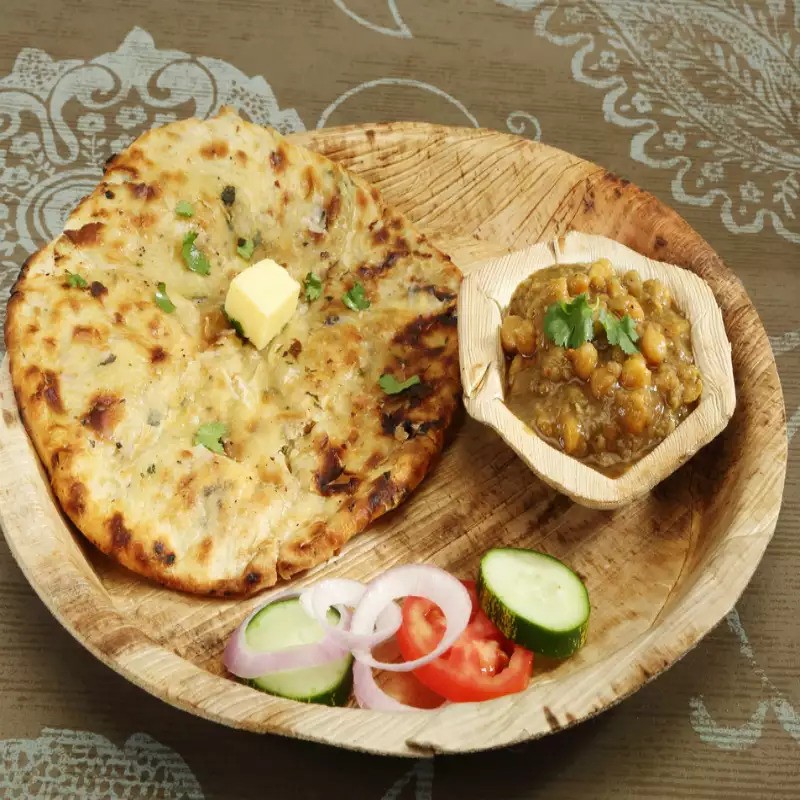 Photo by Times Food
Photo by Times Food
True to its name, the Amritsari Kulcha is a dish made popular in the city of Amritsar in India. Best described as a flatbread stuffed with boiled and mashed potatoes, onions, and spices, the Amritsari Kulcha is a breakfast staple for many of those who call this city home.
To get its iconic crisp, the Amritsari Kulcha is baked in a tandoor oven and often smeared with chickpea curry – or chole – before serving. This creates an unforgettable flavour for anyone who’s trying it for the first time, as it combines aromatics and texture in a single bite.
Found almost everywhere along the streets, this flatbread has since seen plenty of modern takes, especially with a variety of stuffings. From cheese to butter and some even paneer, the Amritsari Kulcha is definitely a dish we can’t stop raving about whenever someone asks about things you must try eating when in India.
Feeling hungry for a gastronomical adventure where you can be eating while travelling throughout your journey? Come chat with our holiday advisors to make your foodie trip come true. With so much to see, eat, and do, we believe there’s always something on a menu that’s just a flight away waiting to be your next favourite meal.
holidaytourstravel





